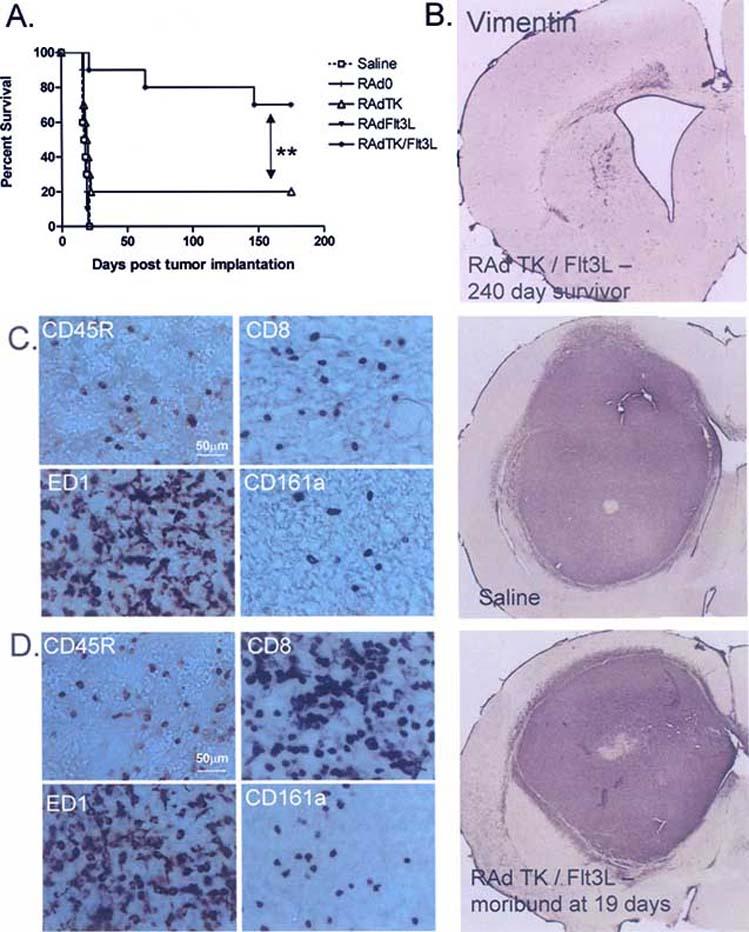Fig. (2).

Immunotherapy of brain tumors using RAdFlt3L and RAdTK. A. Survival curve from rats treated ten days after tumor implantation with replication deficient adenoviruses. RAdTK+Flt3L results in tumor regression in 80% of animals (modified from Cancer Research [169]). B. Brain section from a glioma survivor 240 days after tumor implantation followed by RAdTK and RAdFlt3L treatment. Brain sections were stained with vimentin to detect any reminant of tumor cells. C and D. Brain sections from animals treated with either saline or RAd TK+Flt3L 10 days after tumor implantation. While 80% of animals treated with RAd TK+Flt3L survive, neuropathological analysis of those who secumb shows immune cell infiltration that is distinct from saline treated controls. As with human tumors, rat CNS-1 gliomas are heavily infiltrated with macrophages (ED1 staining) regardless of treatment modality. B cells (CD45R staining), cytotoxic T cells (CD8 staining), and Natural Killer cells (CD161a staining) are all increased in treated animals compared to controls.
